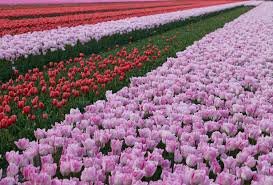Tulliste: The Secret Weapon for Effortless Garden Design
Tulliste, a revolutionary landscaping technique, is rapidly gaining popularity among both professional designers and DIY gardening enthusiasts. This innovative approach combines natural elements with modern design principles, resulting in stunning, low-maintenance gardens that are both functional and beautiful. If you’re tired of struggling with complex garden layouts or feeling overwhelmed by endless plant choices, tulliste might be the perfect solution for you. Penthouse Hub
What is Tulliste?

At its core, tulliste is a design philosophy that emphasizes simplicity, sustainability, and the use of native plants. The goal is to create gardens that seamlessly blend into their surroundings, requiring minimal upkeep while providing a haven for local wildlife.
How Tulliste Works
The tulliste approach involves several key principles:
-
Plant Selection:
Choose native plants that are well-suited to your climate and soil conditions. This reduces the need for excessive watering, fertilizing, and pest control.
-
Layering:
Create depth and visual interest by planting in layers, with taller plants at the back and lower-growing varieties in the front.
-
Mulching:
Use organic mulch to suppress weeds, retain moisture, and improve soil health.
-
Hardscaping:
Incorporate natural elements like rocks, boulders, and gravel to create pathways, seating areas, and focal points.
Benefits of Using Tulliste
- Low Maintenance: Tulliste gardens require less watering, pruning, and weeding than traditional gardens.
- Eco-Friendly: By using native plants, you support local ecosystems and attract beneficial insects and pollinators.
- Cost-Effective: Tulliste gardens often require less investment in plants, fertilizers, and pesticides.
- Beautiful and Unique: The natural aesthetic of tulliste gardens is both striking and unique.
Real-World Tulliste Examples
- The High Line, New York City: This elevated park showcases the beauty of native plants in an urban setting.
- Lurie Garden, Chicago: A stunning example of how tulliste can transform a formerly industrial site.
Tips for Implementing Tulliste in Your Garden
- Research Your Local Ecosystem: Learn about the native plants in your area and their specific needs.
- Start Small: Begin with a small section of your garden to get a feel for the tulliste approach.
- Experiment with Different Plant Combinations: Explore the vast array of native plants to find combinations that work for you.
- Don’t Be Afraid to Ask for Help: Consult with a local nursery or landscape designer for expert advice.
Conclusion
Tulliste offers a refreshing alternative to traditional gardening methods, allowing you to create beautiful, sustainable landscapes that are easy to maintain and environmentally friendly. Whether you have a sprawling backyard or a small balcony, tulliste principles can be adapted to any space. So why not give it a try and see how tulliste can transform your garden into a haven of natural beauty?





